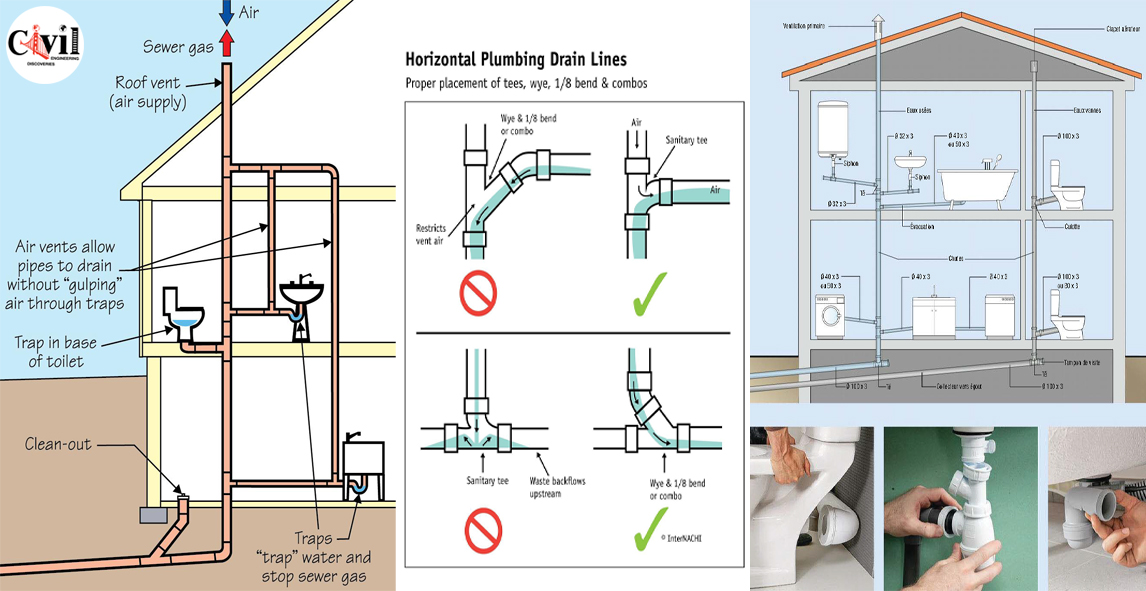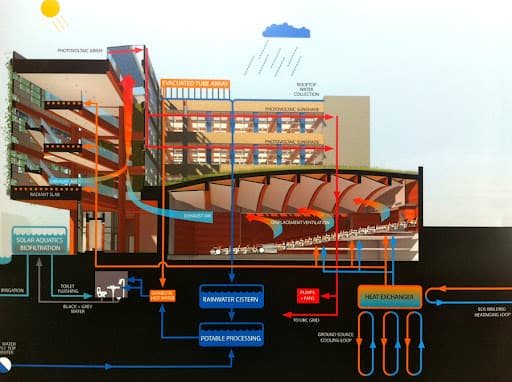The writer is making a few good observations on the subject of Plumbing Installation 101: All You Need to Know overall in this great article directly below.

Comprehending how your home's pipes system works is crucial for every property owner. From delivering tidy water for drinking, cooking, and showering to safely getting rid of wastewater, a well-kept pipes system is vital for your household's wellness and convenience. In this comprehensive guide, we'll discover the elaborate network that comprises your home's pipes and deal suggestions on upkeep, upgrades, and dealing with usual issues.
Introduction
Your home's pipes system is more than simply a network of pipes; it's a complicated system that ensures you have access to tidy water and reliable wastewater elimination. Recognizing its elements and exactly how they collaborate can aid you protect against costly repair services and make sure every little thing runs efficiently.
Basic Components of a Pipes System
Pipes and Tubes
At the heart of your plumbing system are the pipelines and tubes that bring water throughout your home. These can be constructed from different products such as copper, PVC, or PEX, each with its benefits in terms of durability and cost-effectiveness.
Fixtures: Sinks, Toilets, Showers, etc.
Components like sinks, bathrooms, showers, and bathtubs are where water is used in your home. Understanding just how these components link to the plumbing system helps in diagnosing problems and preparing upgrades.
Shutoffs and Shut-off Factors
Shutoffs manage the circulation of water in your plumbing system. Shut-off valves are essential during emergencies or when you need to make repair work, enabling you to isolate parts of the system without interfering with water circulation to the whole house.
Water System System
Key Water Line
The major water line connects your home to the community supply of water or a personal well. It's where water enters your home and is distributed to different components.
Water Meter and Stress Regulatory Authority
The water meter measures your water usage, while a pressure regulator makes sure that water streams at a risk-free stress throughout your home's pipes system, protecting against damage to pipelines and components.
Cold Water vs. Warm water Lines
Understanding the distinction in between cold water lines, which provide water directly from the primary, and warm water lines, which carry heated water from the hot water heater, assists in repairing and planning for upgrades.
Water drainage System
Drain Water Lines and Traps
Drain pipes bring wastewater far from sinks, showers, and toilets to the drain or septic tank. Catches prevent sewer gases from entering your home and likewise catch debris that might cause blockages.
Air flow Pipes
Air flow pipes enable air into the drain system, preventing suction that can slow down drainage and trigger traps to vacant. Appropriate air flow is crucial for preserving the integrity of your pipes system.
Importance of Correct Water Drainage
Making sure proper drain prevents back-ups and water damage. Consistently cleaning up drains pipes and preserving traps can protect against expensive fixings and extend the life of your pipes system.
Water Heating System
Types of Water Heaters
Water heaters can be tankless or traditional tank-style. Tankless heating systems warm water as needed, while storage tanks save heated water for immediate usage.
How Water Heaters Attach to the Pipes System
Understanding just how water heaters connect to both the cold water supply and warm water circulation lines helps in detecting problems like insufficient warm water or leaks.
Upkeep Tips for Water Heaters
Frequently purging your water heater to get rid of sediment, examining the temperature setups, and inspecting for leaks can prolong its life-span and improve energy performance.
Typical Pipes Issues
Leakages and Their Reasons
Leakages can occur because of maturing pipelines, loose fittings, or high water pressure. Attending to leakages promptly avoids water damages and mold and mildew development.
Clogs and Clogs
Clogs in drains and bathrooms are commonly triggered by purging non-flushable things or a build-up of grease and hair. Using drainpipe displays and bearing in mind what goes down your drains pipes can prevent blockages.
Indicators of Pipes Problems to Look For
Low tide pressure, sluggish drains pipes, foul odors, or abnormally high water costs are signs of prospective pipes troubles that should be dealt with without delay.
Pipes Maintenance Tips
Routine Evaluations and Checks
Schedule annual pipes examinations to capture problems early. Try to find indications of leaks, rust, or mineral accumulation in faucets and showerheads.
DIY Maintenance Tasks
Simple jobs like cleansing faucet aerators, checking for toilet leakages making use of color tablet computers, or protecting subjected pipes in cool climates can prevent significant plumbing concerns.
When to Call an Expert Plumbing
Know when a plumbing concern requires specialist competence. Attempting intricate repair work without proper understanding can result in even more damage and greater repair work prices.
Upgrading Your Pipes System
Factors for Upgrading
Upgrading to water-efficient components or replacing old pipelines can improve water top quality, reduce water costs, and increase the value of your home.
Modern Plumbing Technologies and Their Advantages
Check out technologies like clever leakage detectors, water-saving toilets, and energy-efficient hot water heater that can conserve money and lower ecological impact.
Price Considerations and ROI
Calculate the in advance costs versus lasting cost savings when considering pipes upgrades. Numerous upgrades spend for themselves with reduced utility bills and less repairs.
Ecological Effect and Preservation
Water-Saving Fixtures and Appliances
Setting up low-flow taps, showerheads, and toilets can substantially lower water usage without compromising efficiency.
Tips for Reducing Water Usage
Basic habits like repairing leakages without delay, taking shorter showers, and running full tons of washing and recipes can save water and lower your energy expenses.
Eco-Friendly Pipes Options
Consider lasting plumbing products like bamboo for floor covering, which is durable and environmentally friendly, or recycled glass for countertops.
Emergency situation Preparedness
Actions to Take Throughout a Plumbing Emergency situation
Know where your shut-off valves lie and exactly how to turn off the water in case of a burst pipeline or major leakage.
Importance of Having Emergency Contacts Convenient
Keep call info for local plumbing technicians or emergency situation solutions easily offered for quick reaction during a plumbing dilemma.
Do It Yourself Emergency Situation Fixes (When Appropriate).
Momentary fixes like utilizing air duct tape to spot a leaking pipe or placing a container under a trickling faucet can decrease damage up until a professional plumbing shows up.
Conclusion.
Comprehending the makeup of your home's plumbing system equips you to keep it efficiently, conserving time and money on repair work. By adhering to regular maintenance regimens and staying notified concerning modern plumbing technologies, you can ensure your pipes system runs efficiently for years to come.
HOW YOUR PLUMBING SYSTEM WORKS
Which Pipes Do What?
Blue lines = fresh water supply entering the building
Red lines = hot water supply entering the building
Grey lines = pipes carrying waste away from the building and venting pipes carrying gases away from the building (through the roof)
YOUR MAIN PLUMBING SYSTEMS
There are two main plumbing systems that support your home s basic plumbing needs one that brings clean water into your home, and one that sends dirty water away from your home. Connected to the toilet, bath, shower, and other faucets in your home, these two systems keep your water flowing in the right directions.
ACCESSING FRESH WATER
Fresh and clean water is brought into your home through the main water supply line . Filtered through one pipe, this water is pressured to flow into the various fixtures in your home at any given time.
This water can be sourced from a well located on your property, a pond or river (mostly cottages), or, as in most cases, from the city s municipal water treatment centre. However, it is important to note that water that is untreated, such as the water siphoned from ponds or rivers, may not be safe to drink. Personal water supplies always need to be treated for hardness and contaminants before consumed.
MUNICIPAL WATER SUPPLIES
Improve taste and odour
Remove sediment
Eliminate hardness
Reduce chlorine
COLD WATER SUPPLY VS. HOT WATER SUPPLY
Cold water flows into your home or building through the service line, which then distributes hot or cold water to your fixtures. This line is most commonly run through a central column that runs floor to floor. Hot water runs in short and straight pipes as the longer the pipeline, the more heat that will be lost in the transfer. Having shorter pipes also allows residents to access hot water more quickly.
WASTE WATER SYSTEM
Your wastewater system is divided into two parts pipes that send wastewater away from your home and venting pipes that send sewer gas away from your home. Sewage water travels through pipes that flush the water and waste towards local sewers that are operated and managed by your city or town. Most sewer systems rely on gravity to move the wastewater to where it needs to go.
The further away from your toilet or sink, the larger wastewater pipes become. This allows for waste to be disposed of from various parts of your home or business at once without pipe blockages. The angle and flow of these pipes are also essential for keeping your waste pipes clear of build up.
https://harrisplumbing.ca/how-your-home-plumbing-system-works/

HOW YOUR PLUMBING SYSTEM WORKS
Which Pipes Do What?
YOUR MAIN PLUMBING SYSTEMS
There are two main plumbing systems that support your home s basic plumbing needs one that brings clean water into your home, and one that sends dirty water away from your home. Connected to the toilet, bath, shower, and other faucets in your home, these two systems keep your water flowing in the right directions.
ACCESSING FRESH WATER
Fresh and clean water is brought into your home through the main water supply line . Filtered through one pipe, this water is pressured to flow into the various fixtures in your home at any given time.
This water can be sourced from a well located on your property, a pond or river (mostly cottages), or, as in most cases, from the city s municipal water treatment centre. However, it is important to note that water that is untreated, such as the water siphoned from ponds or rivers, may not be safe to drink. Personal water supplies always need to be treated for hardness and contaminants before consumed.
MUNICIPAL WATER SUPPLIES
COLD WATER SUPPLY VS. HOT WATER SUPPLY
Cold water flows into your home or building through the service line, which then distributes hot or cold water to your fixtures. This line is most commonly run through a central column that runs floor to floor. Hot water runs in short and straight pipes as the longer the pipeline, the more heat that will be lost in the transfer. Having shorter pipes also allows residents to access hot water more quickly.
WASTE WATER SYSTEM
Your wastewater system is divided into two parts pipes that send wastewater away from your home and venting pipes that send sewer gas away from your home. Sewage water travels through pipes that flush the water and waste towards local sewers that are operated and managed by your city or town. Most sewer systems rely on gravity to move the wastewater to where it needs to go.
The further away from your toilet or sink, the larger wastewater pipes become. This allows for waste to be disposed of from various parts of your home or business at once without pipe blockages. The angle and flow of these pipes are also essential for keeping your waste pipes clear of build up.
https://harrisplumbing.ca/how-your-home-plumbing-system-works/
Do you enjoy reading up on Anatomy of a House: Understanding the Components? Post a remark further down. We will be pleased to know your insights about this post. Hoping that you visit us again later on. If you please take the time to share this post if you appreciated it. We take joy in your readership.
Call Today